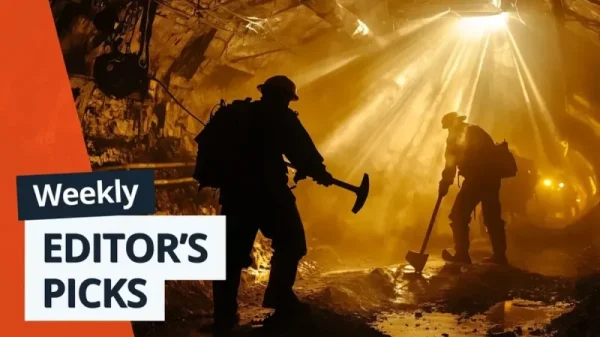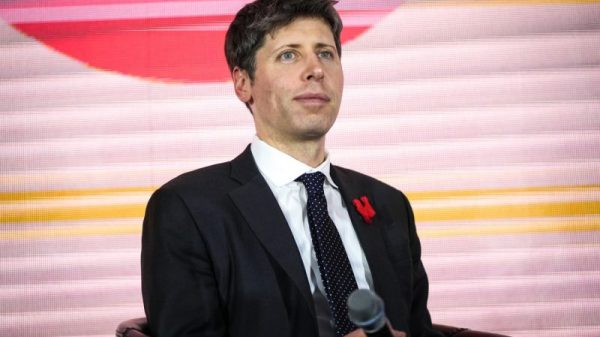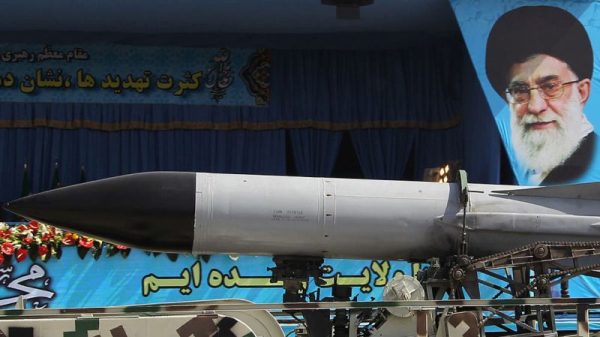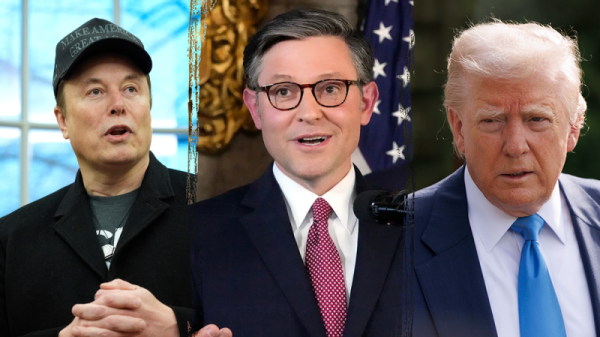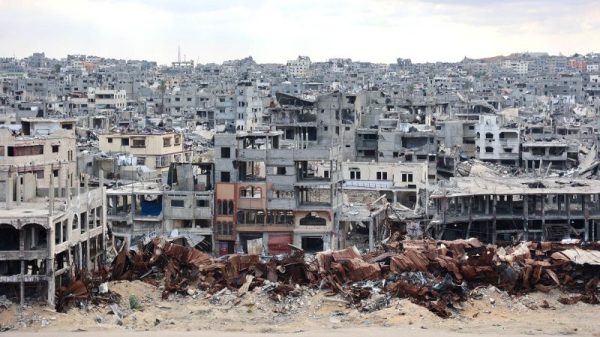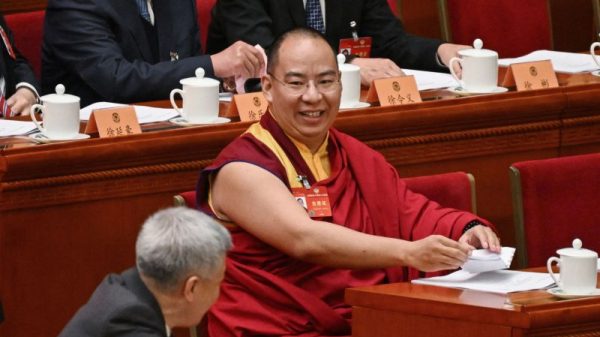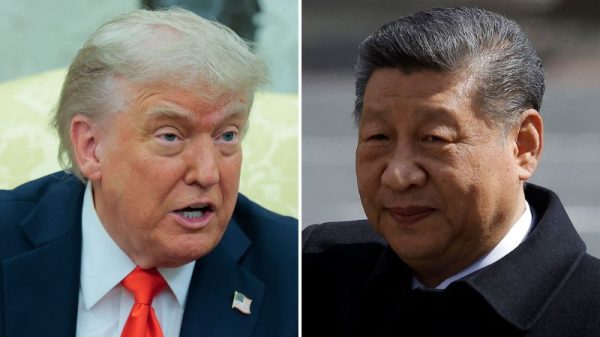As we enter 2024 what lies ahead on the global stage may seem more uncertain than it has in years.
To help you make sense of it, here are some key themes to watch.
1. Israel-Hamas war threatens to spill over
The new year begins with Israel pushing its offensive further into the Gaza Strip in response to Hamas’ October 7 attacks.
International pressure is mounting on Israel to limit the duration and intensity of its war amid global outcry over Gazans being trapped in mortal danger, without critical supplies or access to healthcare, as disease spreads through crowded humanitarian camps. Despite this, Israel has doubled down on its efforts and vowed its war on Hamas will rage for many months.
The risk of a wider Middle East conflict is escalating.
There are increasing cross-border exchanges between the Iran-backed, Islamist paramilitary group Hezbollah and the Israel Defense Forces (IDF) on the Lebanon-Israel border.
Proxy attacks by Iran-backed factions in Iraq – like the recent strike on the US embassy in Baghdad – are becoming bolder and more common. And further attacks by Yemen’s Iran-backed Houthi rebels on global shipping routes through the Red Sea and Suez Canal could make energy prices soar.
There’s also a risk of other extremist groups in the region being fueled by opportunism and/or grievances. It goes without saying that any formal normalization of ties between Israel and Saudi Arabia, a deal that appeared close before October 7, is now off the table.
The United States’ early unequivocal support of Israeli attacks on Gaza has damaged the image it projects as a guarantor of human rights and international law – a reputational hit from which Washington is unlikely to recover in the short term, despite a decisive shift in tone.
Going into 2024, the US and its allies must strike a balance between retaliation for and deterrence of proxy attacks, while keeping their responses under a threshold that would trigger a wider conflict.
2. Stalemate as Russia-Ukraine conflict enters third year
In February, Vladimir Putin’s invasion of Ukraine will enter its third year.
Neither Russia nor Ukraine shows any signs of achieving victory or a willingness to compromise on their incompatible objectives. Ukraine is fighting for its survival, territorial integrity and sovereignty, while Russia is intent on what it calls the “denazification” and demilitarization of Ukraine, and the prevention of its aspiration to join NATO and other Western bodies. The Russian framing of its unprovoked invasion as “denazification” has been dismissed by historians and political observers.
Putin starts the year more confidently than he did the year before.
Ukraine’s long-anticipated 2023 counteroffensive did not recapture the momentum Kyiv had gained by the end of 2022. Russia’s war stockpiles are being replenished by both Iran and North Korea. Plus, the world’s largest-by-area country always has its numerical advantage to rely on in terms of troops, unlike Ukraine, which will suffer increasingly from a manpower shortage next year.
Europe is limited in the ammunition and military hardware it can supply to Ukraine, with its own sad stocks depleted. Ukrainian President Volodymyr Zelensky’s worst fears of cracks in Western unity have also materialized: Political division in the US and Europe is now obstructing the delivery of military and economic aid. Zelensky’s December trip to Washington, DC, resulted in $200 million – instead of the $61 billion he wanted – for new munitions because congressional Republicans wouldn’t budge on the border policy changes they demanded in return.
Days later, Hungary blocked a European Union aid package of 50 billion euros ($55 billion) to Ukraine. This trend will likely continue to stymie Ukraine’s military efforts next year as both the US and EU will prioritize domestic issues ahead of their elections.
Ukraine might then focus on a defensive approach, training new recruits, and defense production. Crimea, illegally annexed by Russia in 2014, will continue to be the strategic prize which Ukraine seeks to strike and challenge Russia’s Black Sea dominance.
Although Ukraine is now formally on its EU membership path , the rhetorical and institutional embrace from allies will likely continue to stand in contrast to their actual military and financial support at times.
Naturally, the future of this conflict hinges in large part on who is at the helm of Ukraine’s biggest source of financial and military aid – the United States. Moscow favors a return of the Republican frontrunner Donald Trump this fall.
3. Elections, certain and uncertain
Elections are always significant, never more so than when so many key players are on the ballots at a moment of global instability. In 2024 2 billion people will go to the polls in a bumper year for voting.
The United States’ elections on November 5 could potentially see Trump return to the White House. Trump has a commanding lead over his Republican rivals for their party’s nomination, but the Colorado Supreme Court judgment that he cannot run in the state due to the 2021 insurrection case, followed by a similar decision in Maine, may foreshadow the obstacles he will face.
There is no precedent for a candidate running under indictment. The mobilizing impact Trump’s claims of a legal “witch hunt” has had on his base is unlikely to translate to the wider electorate. However, President Joe Biden is not energizing Democrats – opinion polls suggest the majority of voters think the octogenarian is too old to be reelected and his approval ratings are low. As ever, the places to watch are the swing states.
India will hold the world’s largest democratic elections throughout April and May.
Incumbent Prime Minister Narendra Modi alongside his Hindu nationalist Bharatiya Janata Party (BJP), is expected to secure a third term with a popular but religiously divisive brand of politics. Despite issues around inflation and purchasing power, Modi enjoys broad support among India’s Hindu majority based on patriotism and a confident foreign policy. Critics counter that India’s once secular and democratic founding ethos is taking a back seat and that minorities feel unsafe.
Russia goes to the polls on March 17. With prominent opposition leader Alexey Navalny incarcerated in a remote Siberian penal colony and comprehensive suppression of independent media, there won’t be any surprises here. However, the level of turnout will be revealing. If Russia’s elections offer limited indication of the government’s popularity, a low turnout could add pressure on the Kremlin and its stalling invasion of Ukraine. Fellow autocracies Belarus and Iran also hold elections.
There will be an early election flashpoint when, in less than two weeks, Taiwan votes, setting the tone with China for the next four years. If the winner is Democratic Progressive Party’s Lai Ching-te, previously a hardline advocate of Taiwanese independence, relations with Beijing are expected to deteriorate or remain frozen. The competing Kuomintang (KMT) and Taiwan People’s Party candidates promise to create less friction with China although all three parties oppose the “one country, two systems” principle espoused by Beijing.
Elsewhere, for the first time since it came to power three decades ago, South Africa’s African National Congress (ANC) faces a real risk of losing its parliamentary majority in the 2024 elections. Unemployment, an unstable economy and crime have broken the ANC’s dominance. Party leader and President Cyril Ramaphosa, who took office in 2018 after his scandal-plagued predecessor Jacob Zuma was effectively pushed out of office, himself faced questions over alleged corruption, which he denied.
4. Territorial disputes
As the wars in Eastern Europe and the Middle East show, we are at in inflection point in geopolitics.
The tilt toward authoritarianism and long-predicted fracturing of Western hegemony has finally come home to roost. There has been a definitive shift away from American unipolarity, with China and Russia taking advantage of this retreat. The geopolitical axes of power are loosely realigning, with the US and EU on one side and an anti-US axis of China, Iran, Russia, and North Korea on the other. This is leading to bolder, less predictable actions and a more dangerous and uncertain global environment.
We will continue to witness this shift, which could be exacerbated by the posturing of non-aligned countries and the rise of competitive blocs such as BRICS.
Territorial disputes and revanchism are on the rise. Azerbaijan’s lightning seizure of the long-disputed Nagorno-Karabakh region is just one instance.
India and China continue to fight about and militarize the world’s longest-disputed border, which separates them. Smaller powers can take advantage of the Western disengagement and the blind eye that ascendant great powers will turn to their expansionist ambitions.
All the while, the increased use of United Nations Security Council veto power is paralyzing and inspires little confidence in the ability of supranational institutions to deter or respond to a world experiencing the most conflict since the second world war.
The inability of regional and international policymakers to negotiate a rapid return to civilian rule in response to a wave of coups in Africa also signals an absence of effective sanctions and leadership.
This raises the risk of contagion, with other countries potentially following suit – especially with the world’s attention fixed on the Middle East and, to a lesser extent, Ukraine.
5. AI comes of age
2024 looks set to see a tension between exponential artificial intelligence (AI) growth and attempts to regulate it, from governing institutions notoriously lacking in tech savvy.
Generative AI – which generates new data, like text, images or designs, by learning from existing data – dates back to the 1950s (we have to give Alan Turing his props here.) But it is only now that we are truly witnessing the paradigm shift as AI technology is widely available and impacting all aspects of our lives.
What does that mean in practice? Huge progress in image generation, design, speech synthesis, translation and automation. The rise of AI assistants and personalizing your tech interactions. Instead of text models like ChatGPT, image-generating models like DALL-E 2, and speech models being separate, they will be combined for a more holistic interface.
As we know, the rapid advancement of AI also brings new ethical challenges.
As AI systems become more advanced, questions about privacy, bias, and accountability become increasingly pertinent. How do we ensure that AI systems respect human rights and freedoms? How do we monitor and prevent AI interference in democratic processes? How do we mitigate the risk of bias in AI decision-making? These are just some of the questions that policymakers, researchers, and society at large must grapple with.
Increasingly sophisticated AI systems require serious processing power – which will mean an industry emphasis on expensive chips and quantum computing. The latter of those is the next frontier in pioneering research which relies on the peculiar and counterintuitive principles of subatomic physics. The information processing speeds of quantum computing and its analysis of data is in a different stratosphere. The integration of quantum computing into AI will mean models are trained faster with far enhanced capabilities for self-evolution.
AI experts cannot even comprehend the future extent and implications of the technology – an unsettling thought given the pace of change and its pervasive impact on humanity. But baked in to the open-ended and uncertain, even the pessimistic, is the potential for surprise and unexpected progress. On the cusp of 2024, humanity can at least cling to that proven constant.


